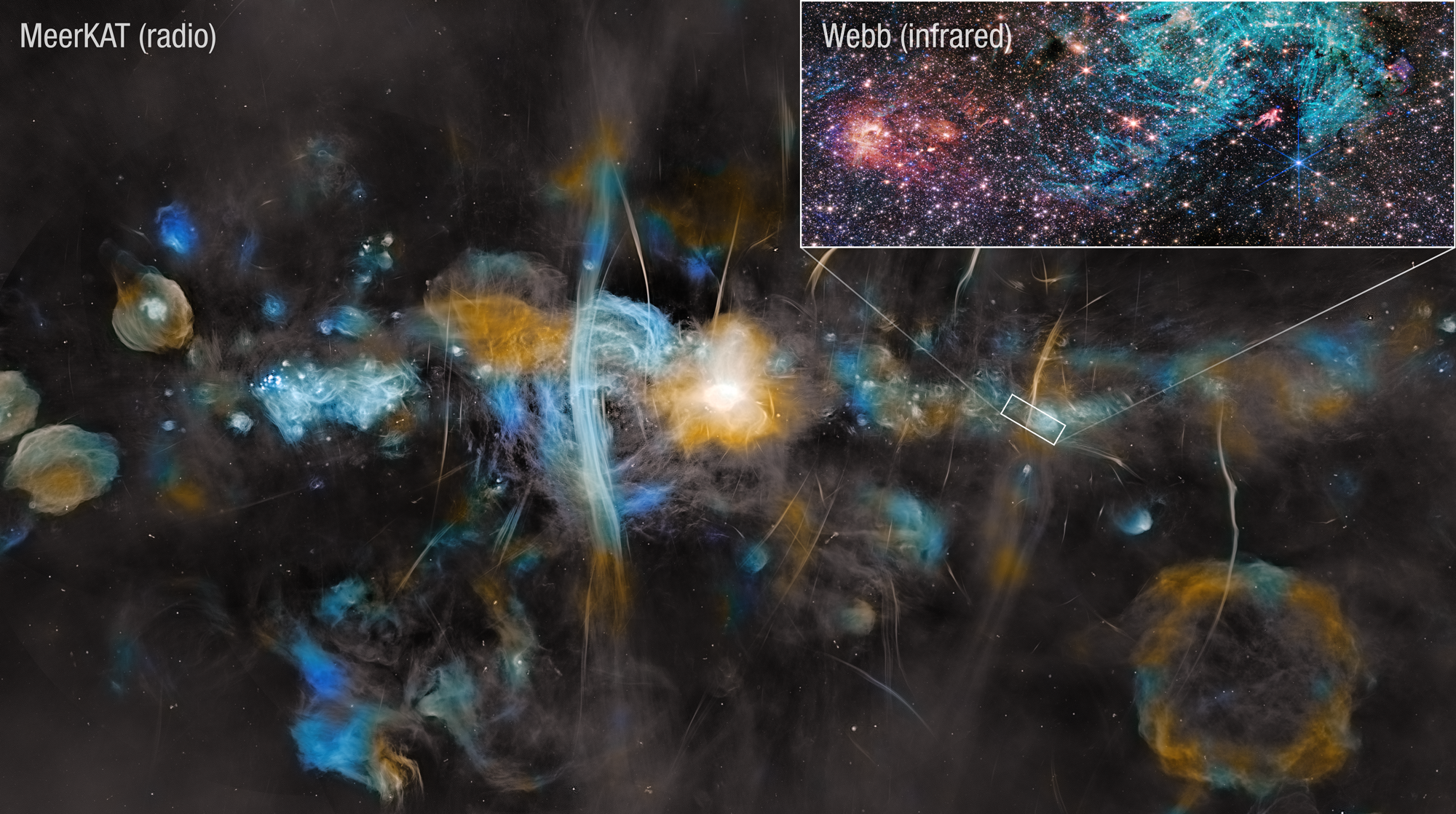
NASA, ESA, CSA, STScI, SARAO, Samuel Crowe (UVA), John Bally (CU), Ruben Fedriani (IAA-CSIC), Ian Heywood (Oxford)
Follow-up research on a 2023 image of the Sagittarius ...
Read More

Follow-up research on a 2023 image of the Sagittarius ...
Read More

In a new study, a team of astrophysicists led by CU Boulder has set out to unravel the mysteries of UFOs—not the alien spacecraft, but a class of unusually large and red galaxies that researchers have nicknamed Ultra-red Flattened Objects, or UFOs for short...
Read More
Teams of astronomers used the combined power of NASA’s Hubble and James Webb space telescopes to revisit the legendary Vega disk.
In the 1997 movie “Contact,” adapted from Carl Sagan’s 1985 novel, the lead character scientist Ellie Arroway (played by actor Jodi Foster) takes a space-alien-built wormhole ride to the star Vega. She emerges inside a snowstorm of debris encircling the star — but no obvious planets are visible.
It looks like the filmmakers got it right.
A team of astronomers at the University of Arizona, Tucson used NASA’s Hubble and James Webb space telescopes for an unprecedented in-depth look at the nearly 100-billion-mile-diameter debris disk encircling Vega. “Between the Hubble and Webb telescopes, you get this very clear view of Vega...
Read More
Astronomers have used the NASA/ESA James Webb Space Telescope to confirm that supermassive black holes can starve their host galaxies of the fuel they need to form new stars. The results are reported in the journal Nature Astronomy.
The international team, co-led by the University of Cambridge, used Webb to observe a galaxy roughly the size of the Milky Way in the early universe, about two billion years after the Big Bang. Like most large galaxies, it has a supermassive black hole at its center. However, this galaxy is essentially ‘dead’: it has mostly stopped forming new stars.
“Based on earlier observations, we knew this galaxy was in a quenched state: it’s not forming many stars given its size, and we expect there is a link between the black hole and the end of star formation...
Read More
Recent Comments